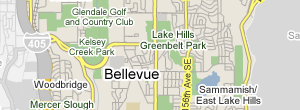Blog
Distressed Inventory Report 2-6-10
The beat goes on. This week distressed inventories rose in all areas. The hardest hit area was East Bellevue (EB). It is up to 132 homes from 123 last week and its NTS/Foreclosure ratio is approaching 1.5. The middle class keeps getting hammered. WB has a small increase from 51 to 53 and SB was up four homes from 55 to 59.
The story this week is that the lenders seem to be real slow getting the inventory to the market. In EB where there are 53 bank owned homes there are only six homes listed. On the January 9th report there was the same 53 foreclosed homes but 13 bank owned homes were listed in the MLS.
Overall if you look at the spreadsheet the bank owned inventory has stayed steady. The homes that are NTS are climbing for the because the lenders had a back log of homes to put into foreclosure until they figured out how to deal with the Washington State’s new requirement that requires the lender to attempt to contact the borrower and see if there is an alternative to foreclosure.
Looks like there will be a number of bank owned homes coming to the market in the summer unless they get short sold in the meantime. The spreadsheet link is here: Bellevue Foreclosure Report 2-6-10
Tags: Bellevue Homes, Distressed Inventory, East Bellevue, foreclosed homes, notice of trustee sale, NTS, report, Short Sale, South Bellevue, West Bellevue
Discussion: No Comments
Weekly Score 2-1-10
The news this week inventories are steady or declining and sales volume is up. EB had 11 homes sold, WB had 8 homes and SB had 12. The pending were not as high but all except for WB which had just one pending still had good volumes. what is interesting is that this time of year you usually have rising inventories as seasonally more homes are brought to the market. It is hard to tell what the sales volume is since the sold homes still reflect December sales and the amount of pending sales in January converting to sold homes has not worked its way through the system
Here is the apreadsheet: Weekly scorecard 2-1-10
Tags: Bellevue Homes, inventories, pendings, sold
Discussion: No Comments
Distressed Inventory Report 1-30-10
The trend continues. East Bellevue (EB) had a big jump in overall distressed inventory which went from the 113 homes the week before to 123 homes this week. This week alone there were 8 new Notice of Trustee Sale (NTS) alone. It does look like the lenders are getting geared up to take these homes back. South Bellevue (SB) also saw an increase of total distressed inventory from 52 homes to 55 homes and this week 5 new NTS. Last week there were 4 new NTS. What is surprising is that there wasn’t a bigger jump in inventory given the new NTS. Things seem to keep selling but not as fast as the new NTS notices are coming through. West Bellevue was the exception. It saw a decrease from 51 to 55 homes. with the number of NTS overall being down. As a matter of fact customers I am working with are frustrated there is not more upper end distressed inventory. In WB there is only one bank owned home listed.
A disturbing trend is starting to emerge. The middle calss neighborhoods such as are in EB are really starting to take the brunt of foreclosures. The 98008 zip code in particular. The higher you go in price the less the problem and in fact in WB the problem appears to be easing. While I maintained the real estate recovery was going to be a top down recovery in this area, this is not good news overall. Something needs to be done to put people back to work. Our GDP increased 5.7% this week over the last quarter but compared to last year for the same quarter it was little increased but the most distressing part is that same GDP was created with about 3,000,000 fewer jobs. Shrinking our way to propserity will not work and eventually will cause the economy to begin contracting again. This is the message the stock market has finally figured out.
Here is the spreadsheet: Bellevue Foreclosure Report 1-30-10
Tags: Bellevue Homes, Distressed, foreclosure, inventory, Notice of tru, report
Discussion: No Comments
Weekly Scorecard 1-25-10
Well a day late this week but here is the Weekly Scorecard. The big news to me is that the inventories stayed fairly low this week. Usually this time of year you will start to see inventories rise again but they seem slow on the uptake. South Bellevue defenitely had the largest overall sales and pending volume at 9 sold homes and 15 pending homes. The South Bellevue per sq. ft. sale and pending numbers were in line with the averages. West Bellevue had no new sales and no new pendings. Low sales volume this time of year is typical but having double goose eggs is somewhat of a surprise. East Bellevue was eratic and hard to get a feel for although there was more overall activity this week.
Here is the spreadsheet: Weekly scorecard 1-25-10
Tags:
Discussion: No Comments
Distressed Inventory Report 1-23-10
Like last week the numbers keep creeping up. The interesting area though is West Bellevue (WB). It saw no increase in foreclosures and the number of Notice of Trustee Sales (NTS) declined. As we have discussed before a lot of the distressed inventory was new construction in WB and that has been cleaned out. I think that is what may be causing the declining numbers. We will see how the numbers look in the next few weeks to get an overall feel how much the new construction was effecting the distressed inventory in WB. East Bellevue (EB) is gradually rising but the bulk of the new NTS was a new neighborhood off of SE 7th. I am very familiar with that situation since I had these homes listed at one point in time. South Bellevue (SB) seemed to be holding steady.
There still seems to be a real lag time between when the lender gets the home back and gets it in the MLS. The servicers handling these homes for the banks appear to be overwhelmed. The problem is that a foreclsoure is a cost and the banks are hesitant to spend any funds to expand these operations.
The link for the spreadhshhet is here: Bellevue Foreclosure Report 1-23-10
Tags: Bellevue Homes, Distressed Inventory, foreclosure, notice of trustee sale, report, Weeklt
Discussion: No Comments
Local Banks Part II
In the last post I discussed the overall market conditions and unique nature of our banking market in the NW that is causing so many problems in this state. 2010 will be the year of reckoning for our local banks and in addition to the market forces there are regulatory forces causing problems. In November of 2008 as the TARP money was being put together and the legislation finalized two crucial regulations were enacted that have caused problems. Both of these regulations seem good on the surface but they have hampered the work out process. The first regulation was that you could not keep advancing funds on a loan that had gone into default. The purpose of this regulation was to appease the legislators in Congress that didn’t want the TARP funds used to keep promoting bad behavior. Sounds good on the surface but in the terms of real estate construction lending it can be disastrous. What this means is that if you have a partially finished lot development or a partially completed new construction home then you cannot advance funds to finish it. In the case of a speculative construction home, the home has no real value and cannot provide any use until it is completed. As an example let’s say you have a new construction home finished that would be worth $1,000,000 when completed. All that is needed to complete the home would be an additional $200,000 in funds however the builder can’t make his interest payments any more so you have to stop construction and foreclose. You would think that home would be worth $800,000 since $200,000 is all that is needed to finish it. However that is not the case. The home has probably degraded during the foreclosure process or worse but that is not the problem. The problem is that a new buyer has to go out and get construction financing which is not readily available and then hire a new contractor and then complete the home. There may be problems with code inspections or even worse the permit may have expired and the building codes changed in the meantime so the home has to essentially be rebuilt. Instead this home sells for about $400,000. A huge loss for the bank. I have even seen a case where a large condo project lost all of its approvals because the bank was not allowed to advance $5,000 to renew the Master Use Permit in the City of Seattle. What happened in the eighties during the S and L crisis the better capitalized banks would advance funds and see the project was finished. The only thing worse than taking a project back is taking back an uncompleted project. Just a few of these large projects can really hammer a bank and selling some of them is almost impossible not to mention the liability and blight to the community.
The other factor that really hurt is that the regulators wanted to stop “risky” lending. Again another good idea but with unintended consequences. What this meant is that the bank who took back the partially completed asset cannot lend on it. Again I go back to my experience in the eighties and generally what a bank would do, would be to move good assets from weaker borrowers to stronger borrowers by providing new loans to these stronger borrowers who often brought new money to the table and the expertise to better manage the project. It gets worse. Now given the devaluations caused by these restrictive regulations the stronger borrowers now are required to drain their funds just to manage what they have since the value of their assets are in a downward spiral. The effect of this is to create massive liquidity problems that were never intended to happen. Most of these state chartered banks would be in better shape if they were allowed to enhance the value of the asset and to provide new loans to more capable borrowers. Most of these state chartered banks did not receive any TARP money. Also the better borrowers are seeing their sources of financing disappear before their eyes with no replacement. This will tank many small businesses.
But it even gets worse. Now the these assets sit because the value has declined so much the bank can’t afford to sell it since it will be such a big hit to their balance sheet. The bank cannot enhance the value of the asset by completing it nor can they sell the asset. So guess what happens. The bank goes under and the FDIC takes receivership of those assets, since any receiver bank in their right mind won’t touch these assets now comes the ironic part. The FDIC is stuck with the assets so guess what it does? They provide financing to help “create value” for the sale. Sounds like a good idea. As an example when CORUS Bank in Chicago went under Starwood Capital bought the assets for a fraction of their book value. The FDIC provided financing. For the most part the financing was 5 Years at 70% of the value of the asset with an interest rate of 4% on some pretty bad stuff. However on much of the uncompleted projects the FDIC was forced to acknowledge the problem it created by doing financing up to 10 years at “0″ percent interest.
So there you have it the hedge fund guys win again. They get to hold the asset for no interest for 10 years. There is not much incentive to finish the asset and they will hold it and just sell it back to some local developer in the future. In addition the message this sends to those interested asset purchasers is chilling. Why buy the asset from the bank? They can’t provide financing so you have to pay all cash and the bank can’t improve the asset or discount it enough to make it saleable because of the regulatory environment so if your a large asset player just wait for the FDIC to take the bank out and shoot it in the head so you can get that great deal with financing. The local purchaser is shut out and the lending institution is trashed along with all of the jobs but most importantly for the long term that source of community based lending is gone. These community based banks will be instrumental in funding any future recovery. There is a solution and that will be addressed in the next sequel.
Tags: Bank, Bank Closure, FDIC, Hedge Funds
Discussion: No Comments


